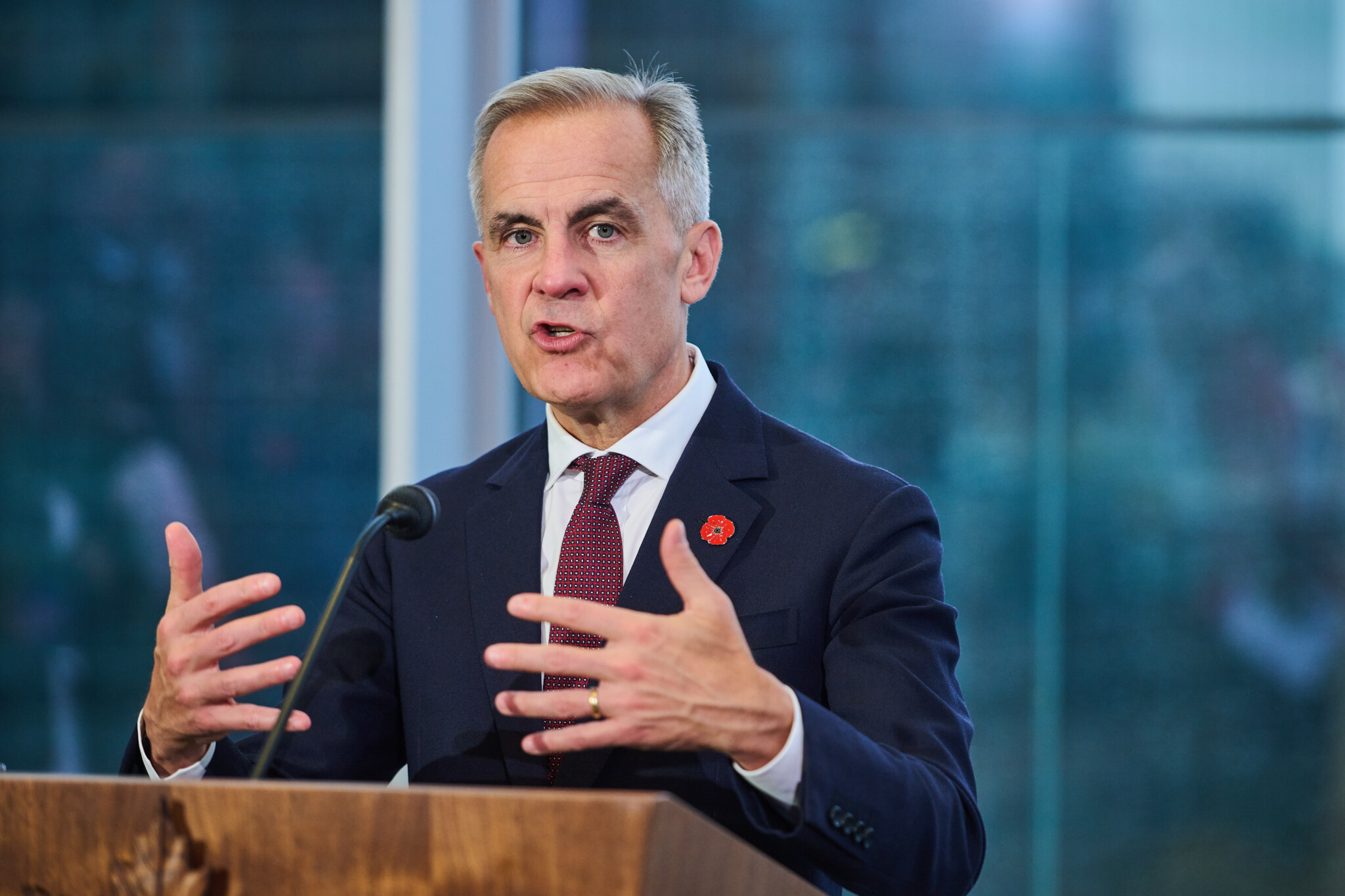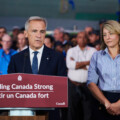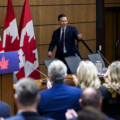When Prime Minister Mark Carney announced the Major Projects Office (MPO) last summer, it was pitched as a way to cut through regulatory red tape and accelerate nation-building infrastructure. But six months later, and after a press conference today announcing more projects under the MPO, critics believe the initiative appears to have evolved into a government funding mechanism rather than a regulatory streamlining tool.
The Hub spoke with Macdonald-Laurier Institute director of energy, natural resources, and environment Heather Exner-Pirot to better understand how the MPO is functioning in practice, following Carney’s latest announcements of seven new “nation-building projects”, and what it means for Canada’s economic development strategy in the face of U.S. tariffs which could cost the Canadian economy $50 billion.
Here are four key takeaways from the conversation:
1. The Major Projects Office primarily appears to be about financing, not regulatory reform: Some projects on the list have already received regulatory approval and fall under provincial jurisdiction—what they needed was government funding.
2. Bill C-5 designation powers remain unused: Despite legislation allowing projects to be designated as “nation-building” to bypass certain federal laws, no projects have received this designation, suggesting the regulatory streamlining promised has not yet materialized.
3. Oil pipelines remain conspicuously absent from the list: While liquified natural gas (LNG) and critical minerals projects have been given the government’s seal of approval, oil infrastructure has been left off both the first and second round of projects.
4. The approach may contradict the government’s economic priorities: Despite the Carney government’s promises to build “at speeds not seen in generations” and double non-U.S. exports within the decade, the government has yet to indicate whether oil qualifies as “clean growth” or under what circumstances it would support oil infrastructure.
The Major Projects Office is primarily about financing, not regulatory reform
When the Major Projects Office was announced, many observers expected it would serve as a vehicle for cutting regulatory red tape that has long hampered major infrastructure development in Canada. Instead, Exner-Pirot says the office appears to have become a conduit for government funding.
“These are all fine projects. I’m not going to criticize the projects, but they are not projects that really needed regulatory smoothing out,” Exner-Pirot explained. “For the most part, these have already been approved. What they did need was more financing. These were things that the private sector alone was not willing to advance.”
This approach has significant implications for how Canada approaches economic development. Rather than creating an environment where private capital can thrive, the government is selectively supporting projects with public funds and picking winners, she asserted.
Projects include a mine project in New Brunswick and Ontario; a liquified natural gas project, transmission line, and a “conservation corridor” in B.C.; a hydro project in Iqaluit; and a graphite project in Quebec.
Bill C-5 designation powers remain unused
One of the key tools available under Bill C-5 was the ability to designate certain projects as nation-building, allowing them to bypass lengthy federal regulatory processes. However, this mechanism appears to have gone unused.
“As far as I know, none of the projects on the major projects list have actually been designated [under C-5]”
Instead, the primary incentive for projects to seek inclusion on the MPO list appears to be access to government financing instead, she explained.
Oil pipelines remain conspicuously absent from the list
Perhaps the most notable omission from the Major Projects Office list is oil pipeline infrastructure. While Exner-Pirot says the government has made progress on LNG projects and critical minerals, oil—Canada’s largest export commodity—has been left out.
“Oil is the one where you don’t need government, you don’t need the MPO to finance,” Exner-Pirot explained.
She pointed to recent announcements from Canadian Natural Resources Limited about four potential projects worth 340,000 barrels in daily production and Enbridge’s plans to expand their mainline.
“These are not projects that want to be on the MPO list, and are not looking for government money. All they want is to get some of those regulations out of the way so that they can get final investment decisions , so they can go to their board, to their shareholders.”
The absence is particularly striking given that an agreement between the Prime Minister and Alberta Premier Danielle Smith was expected by the Grey Cup.
“We still don’t know if the Prime Minister supports an oil pipeline and if he does, in which direction,” she said.
Last week, when asked about a pipeline, the prime minister insisted he had not forgotten about pipeline projects.
“We’re on the pipeline stuff,” he told a Toronto crowd. “Don’t worry, it’s going to happen. Well, something’s going to happen, let’s put it that way.”
The approach contradicts stated economic priorities
Exner Pirot says the gap between Prime Minister Carney’s rhetoric and the Major Projects Office’s actual function is becoming increasingly apparent. Carney called for building at speeds not seen in generations and doubling non-U.S. exports in 10 years, yet the government has struggled to provide clarity on whether oil infrastructure fits within its economic vision.
“If your economic development strategy is to go to Ottawa instead of to the banks or the markets or the investors, you’re doing economic development wrong,” Exner-Pirot said. “So I think we are doing economic development wrong.”
The timing is particularly puzzling given shifting global attitudes toward energy and climate policy and during a muted COP30 conference this week. She noted that the International Energy Agency recently projected continued oil demand through 2050, and climate change has dropped to 10th place in polling around Canadians’ priorities.
“It’s perplexing to me that it’s still difficult for this Liberal government to say that despite all their other goals, they can’t say that they want an oil pipeline or that it must come with some strings attached,” she concluded.
This commentary draws on a Hub podcast. It was edited using AI. Full program here.
Is the Major Projects Office truly streamlining development, or is it a government funding tool?
Why are oil pipelines conspicuously absent from the MPO's 'nation-building' project list?
Does the MPO's approach align with Canada's stated economic goals, like doubling non-U.S. exports?










Comments (0)